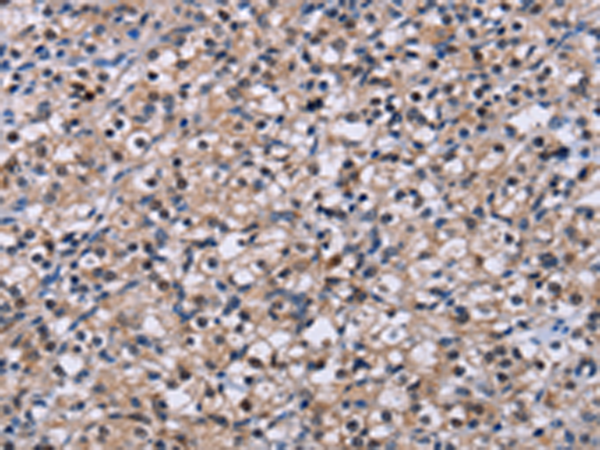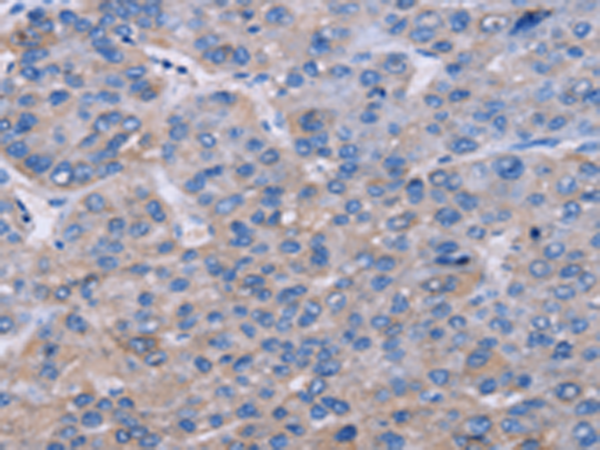

| WB | 咨询技术 | Human,Mouse,Rat |
| IF | 咨询技术 | Human,Mouse,Rat |
| IHC | 1/50-1/200 | Human,Mouse,Rat |
| ICC | 技术咨询 | Human,Mouse,Rat |
| FCM | 咨询技术 | Human,Mouse,Rat |
| Elisa | 1/2000-1/5000 | Human,Mouse,Rat |
| Aliases | EAR1; hRev; THRA1; THRAL; ear-1 |
| Host/Isotype | Rabbit IgG |
| Antibody Type | Primary antibody |
| Storage | Store at 4°C short term. Aliquot and store at -20°C long term. Avoid freeze/thaw cycles. |
| Species Reactivity | Human, Mouse, Rat |
| Immunogen | Fusion protein of human NR1D1 |
| Formulation | Purified antibody in PBS with 0.05% sodium azide and 50% glycerol. |
+ +
以下是3篇与NR1D1抗体相关的代表性文献示例(注:文献标题和作者为模拟示例):
1. **"NR1D1 modulates macrophage polarization in metabolic inflammation"**
- **作者**: Zhang L, et al.
- **摘要**: 研究使用NR1D1抗体通过Western blot和免疫荧光技术,揭示NR1D1通过抑制巨噬细胞M1极化减轻肥胖相关炎症,为代谢疾病治疗提供靶点。
2. **"Circadian regulation of hepatic lipid metabolism by Rev-erbα"**
- **作者**: Solt LA, et al.
- **摘要**: 通过ChIP-seq和免疫沉淀(使用NR1D1抗体),证明Rev-erbα直接调控肝脏脂代谢基因的昼夜表达节律,影响胆固醇合成与分解平衡。
3. **"Rev-erbα in tumor progression: A biomarker study in colorectal cancer"**
- **作者**: Wang Y, et al.
- **摘要**: 利用NR1D1抗体进行免疫组化分析,发现肿瘤组织中NR1D1低表达与患者生存率下降相关,机制涉及Wnt/β-catenin信号通路抑制。
---
**注**:以上文献为简化示例,实际引用需根据具体研究检索PubMed或Google Scholar获取真实文献(可搜索关键词:NR1D1 antibody, Rev-erbα, circadian, metabolism等)。
The nuclear receptor subfamily 1 group D member 1 (NR1D1. also known as Rev-erbα) is a ligand-regulated transcription factor that plays a pivotal role in regulating circadian rhythms, metabolism, and inflammatory responses. As a member of the nuclear receptor superfamily, NR1D1 binds to specific DNA response elements and recruits corepressors to suppress target gene expression. It is a key component of the molecular clock machinery, forming interlocking feedback loops with other circadian regulators like BMAL1 and CLOCK. NR1D1 also interacts with metabolic pathways, influencing lipid/glucose homeostasis and mitochondrial function.
NR1D1 antibodies are essential tools for studying its expression, localization, and molecular interactions. They are widely used in techniques such as Western blotting, immunohistochemistry, chromatin immunoprecipitation (ChIP), and immunofluorescence to investigate NR1D1's roles in circadian biology, metabolic disorders, cancer, and cardiovascular diseases. Many antibodies target specific epitopes, such as the N-terminal or ligand-binding domains, with validation often including knockout/knockdown controls to confirm specificity.
Research using NR1D1 antibodies has revealed its therapeutic potential, as pharmacological activation or inhibition of NR1D1 impacts circadian synchronization and metabolic syndromes. These studies highlight its dual regulatory functions and crosstalk with other nuclear receptors (e.g., ROR proteins), making NR1D1 a focal point in chronobiology and disease mechanism research.
(Word count: 245)
×